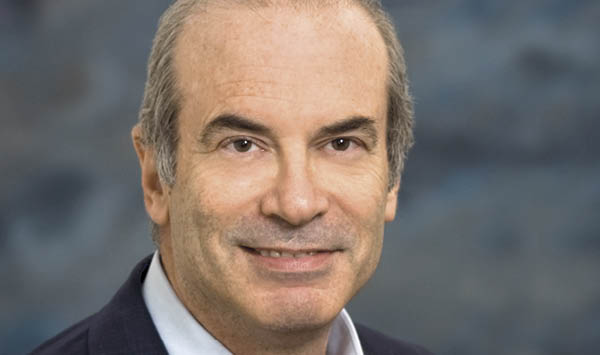Dennis Omanoff: Hard-Driving Man

Dennis Omanoff joined Seagate in 2011 and serves as senior vice president of supply chain and procurement. Based in Cupertino, Calif., Seagate is a leading manufacturer of hard drives and storage solutions.
Responsibilities: Supply and demand planning, commodity management, procurement, retail supply chain, service supply chain, logistics, and freight.
Experience includes: Several positions in manufacturing engineering, assembly, test and program management, Texas Instruments; executive-level positions in quality and supply chain, SynOptics (later BayNetworks); adjunct professor, San Jose State University; vice president, operations and support, Candera/ZForce; senior vice president, chief supply chain officer, chief procurement officer, manufacturing and corporate real estate, McAfee.
Education: Fordham University, BA in philosophy and economics, 1977; Hofstra University, MBA in operations research, 1978.
When I joined Seagate in 2011, floods in Thailand were taking a tremendous toll on the hard-drive industry, and affected the supply chain for all our key components.
Seagate made some strategic moves at the time to help restore the industry. For example, we provided financial aid to key suppliers, setting the stage for future collaboration. I don’t take credit for that, but I was proud to be part of it.
Between those floods, an earthquake in Turkey, the tsunami in Japan, and the volcanic eruption in Iceland, the hard-drive industry has seen a fair share of supply disruptions in recent years. Business continuity and disaster recovery will be a concern for a long time.
At Seagate, we’re starting initiatives to better manage information about the health of our supplier network and events that could cause disruptions. We’re also evaluating how to regionalize operations. We’ve launched projects that get us close to our customers, so we can better meet their needs and respond to their time-sensitive demands.
Seagate is also investing in employee development. We’re creating resources employees can use to continue their educations, connect with industry-leading programs, and create professional networks within and outside Seagate. When they’re facing tough challenges, our people will have resources for finding solutions.
As part of that effort, we’re forging a relationship with a major university that will allow employees to earn certifications that can assist them through a long supply chain career. In addition, we’ll allow workers to perform a variety of jobs, helping them become well-rounded professionally.
McAfee’s supply chain organization ran a similar program, and it paid off well. We were the only organization in the company to gain recognition for a high-performance work team from human resources consulting firm Hewitt Associates. I was proud of the way we made employees feel engaged in their work. And, of course, an engaged workforce is a more productive workforce.
One thing I’ve learned about keeping teams engaged is the importance of communication. Team members need to feel that they are part of the process, and understand how changes the company makes will help them grow.
Not only must you communicate, but you must do it through multiple channels, including some that you might not feel comfortable with. For example, along with e-mails and face-to-face communications, Seagate uses Chatter, a collaborative tool from Salesforce.com that is similar to Facebook for the enterprise.
I’ve learned that I have to adapt to communicating in many different ways, in order to reach everyone I count on for support.
Seagate ships a hard drive every 6.5 seconds, purchases more than $8 billion worth of material every year from 70 major suppliers, and brings in billions of parts daily to meet growing demand.
Like many of the companies I’ve worked for, Seagate’s business is growing at a rapid pace. The opportunity to participate in fast-growth environments in different sectors has been a wonderful experience.
The Big Questions
What do you do to recharge your batteries?
During business trips, I like to take my teams on cultural excursions. I drive race cars, collect wine, and read. I also make the best barbecued ribs you’ll ever taste.
What’s the worst job you’ve had?
In high school, I delivered ices at 4 a.m. in Harlem to people who sold them from carts. I got paid in cash, which made me a target for holdups.
What has been your scariest career decision?
Leaving my secure but exciting job with Texas Instruments to join SynOptics, a networking startup. It was a frightening move at the time, but given the new company’s rapid growth, I think I made the right decision.
Do you have a guilty pleasure?
Jelly beans.
